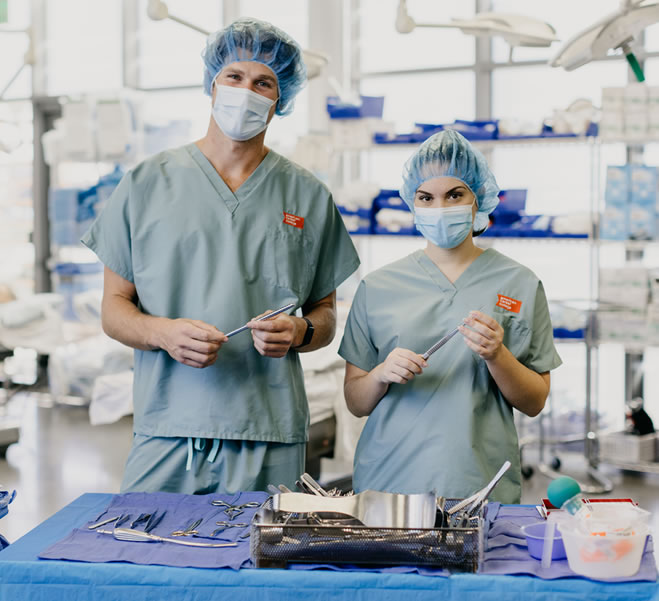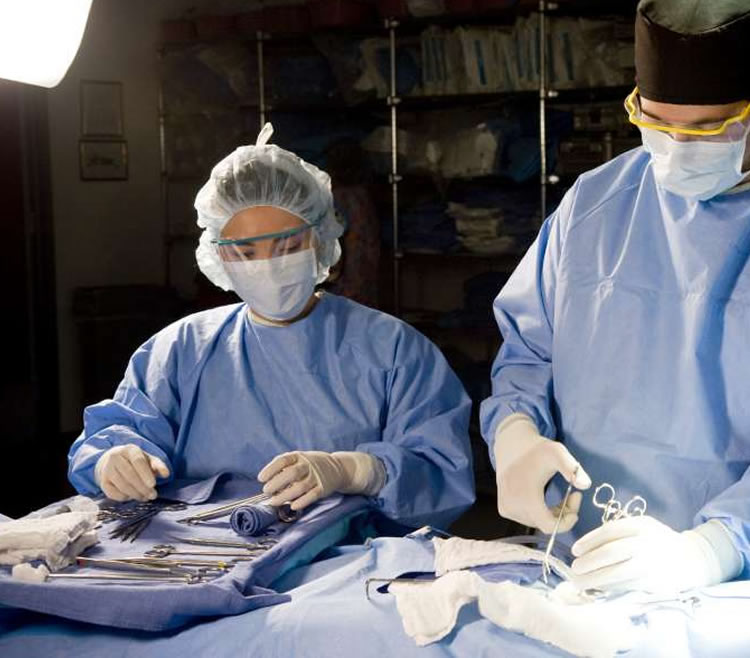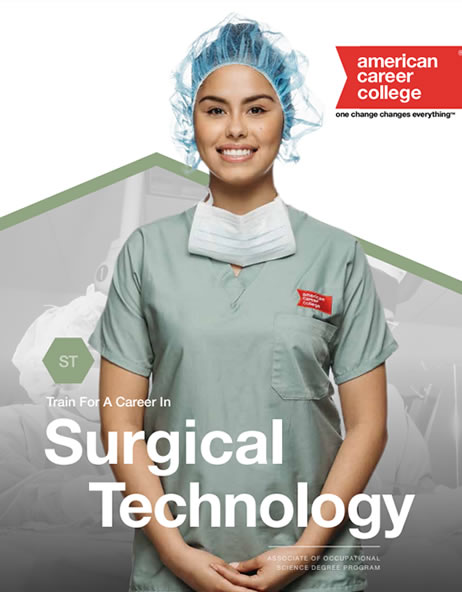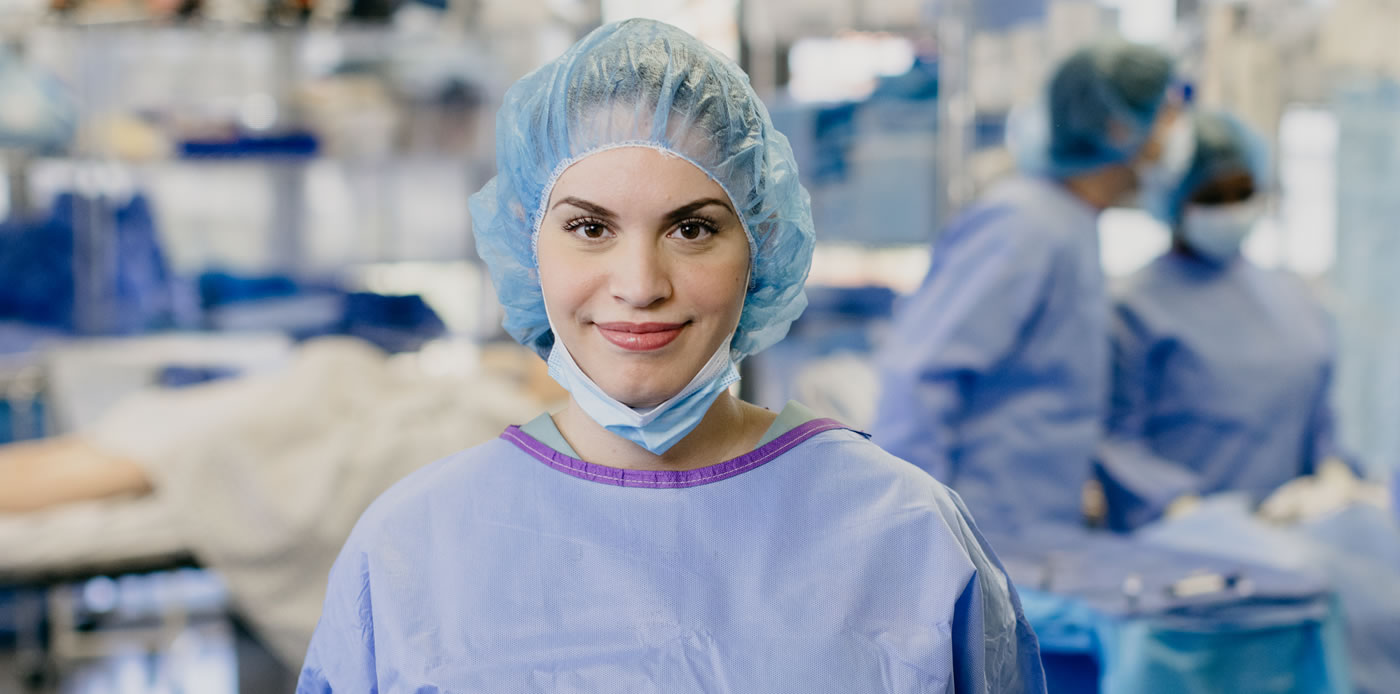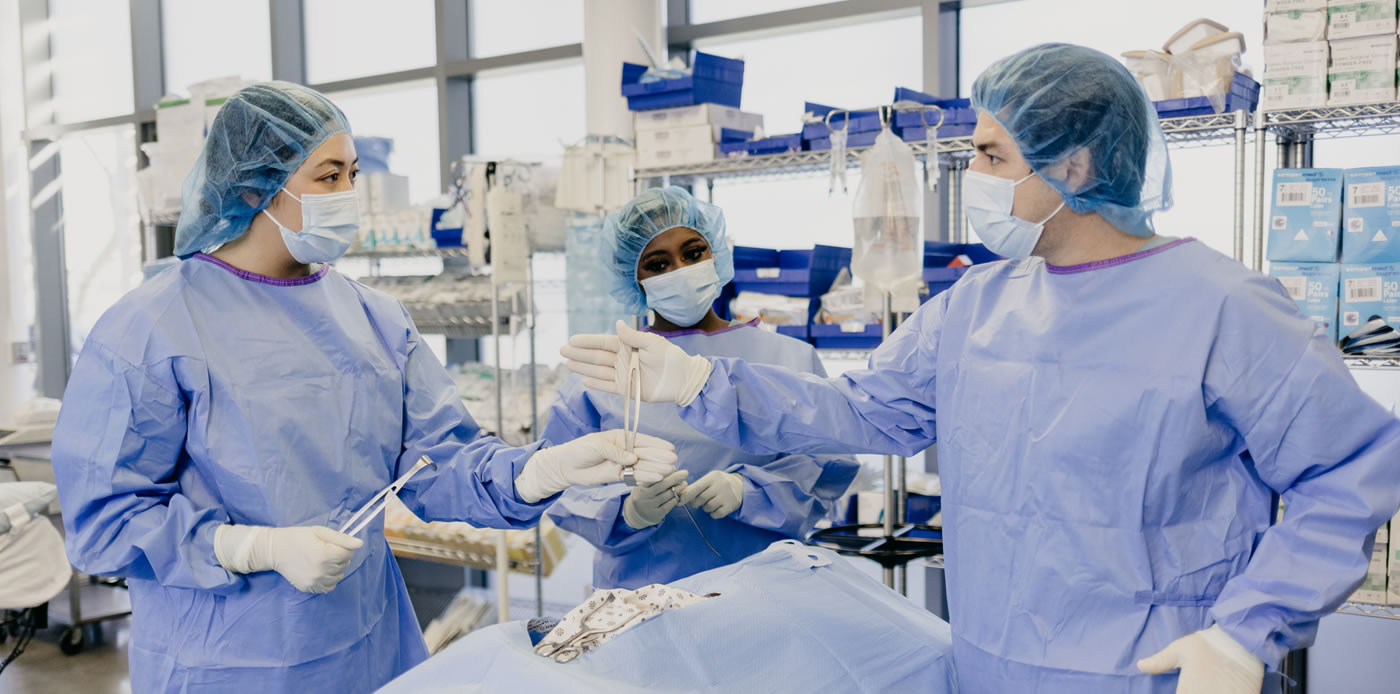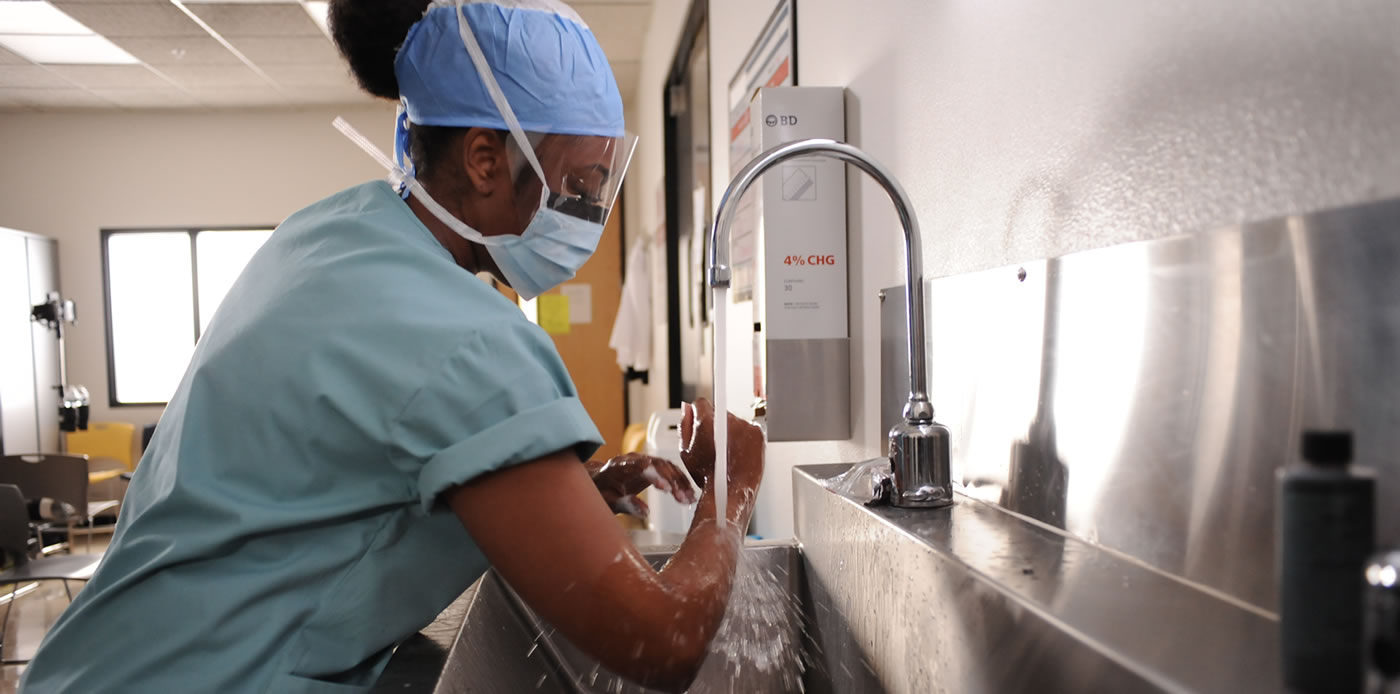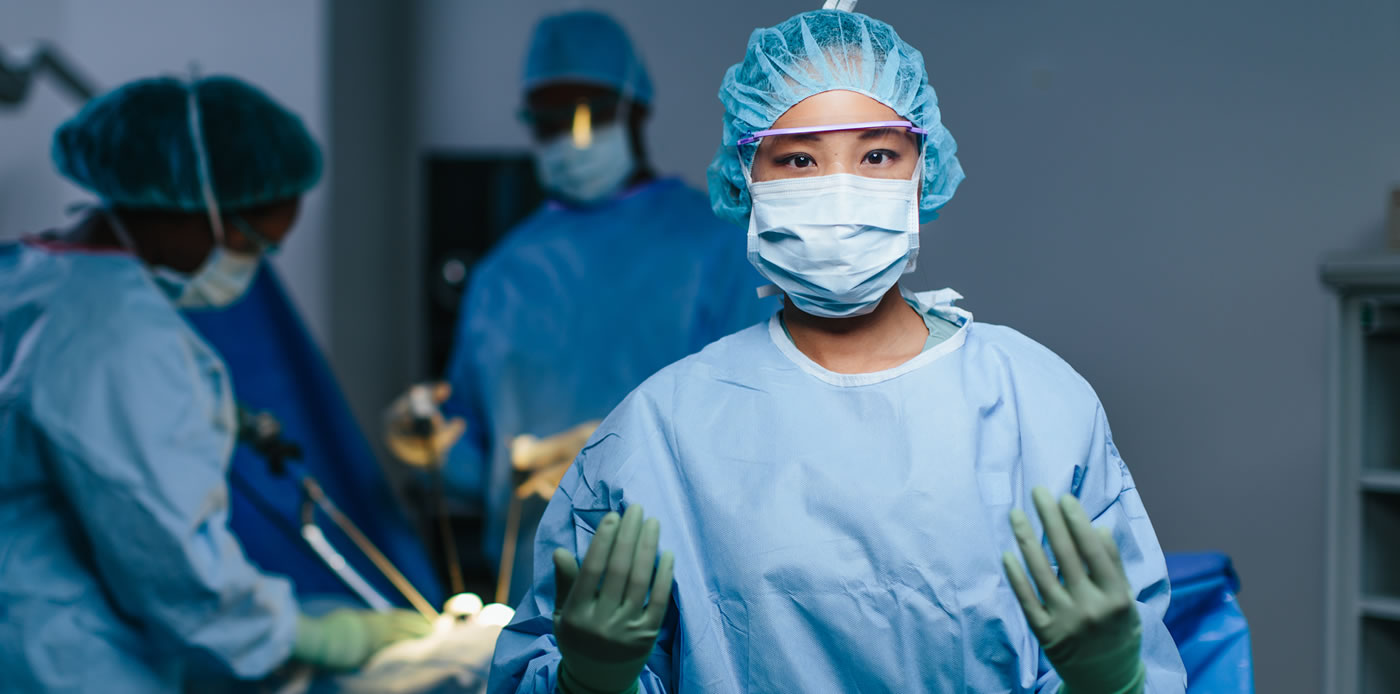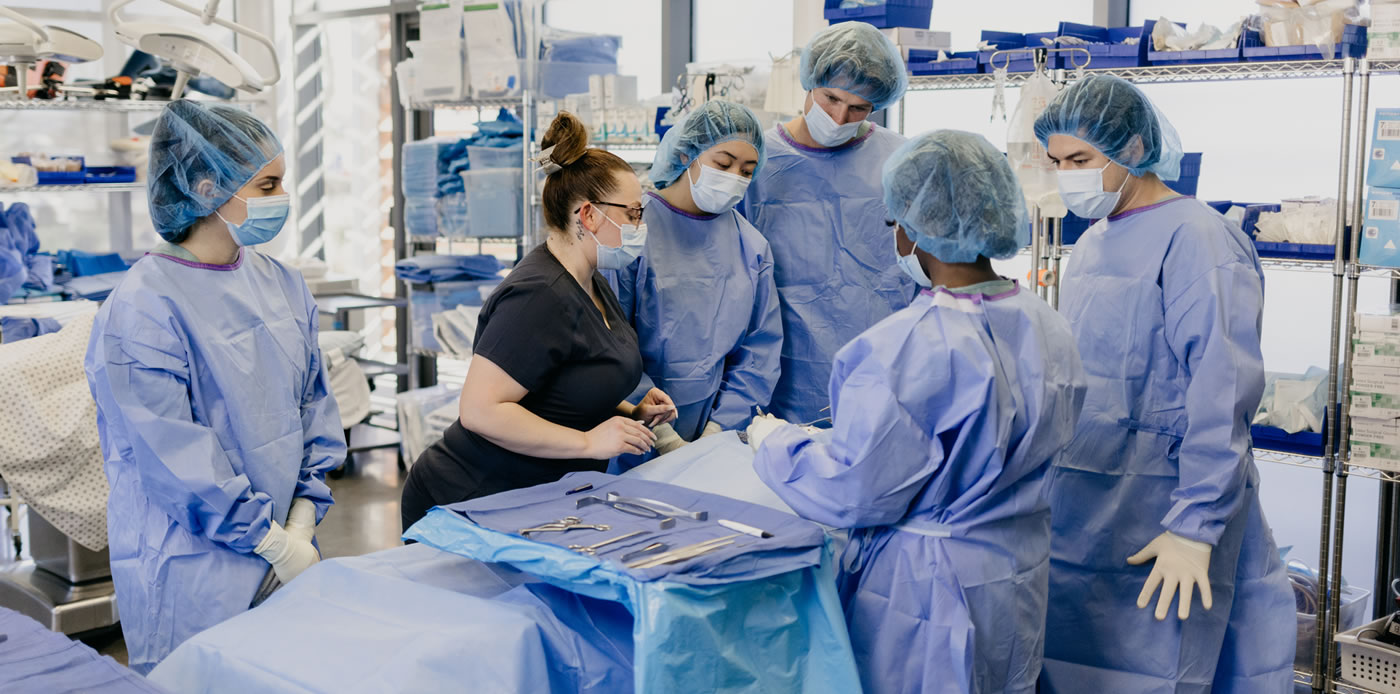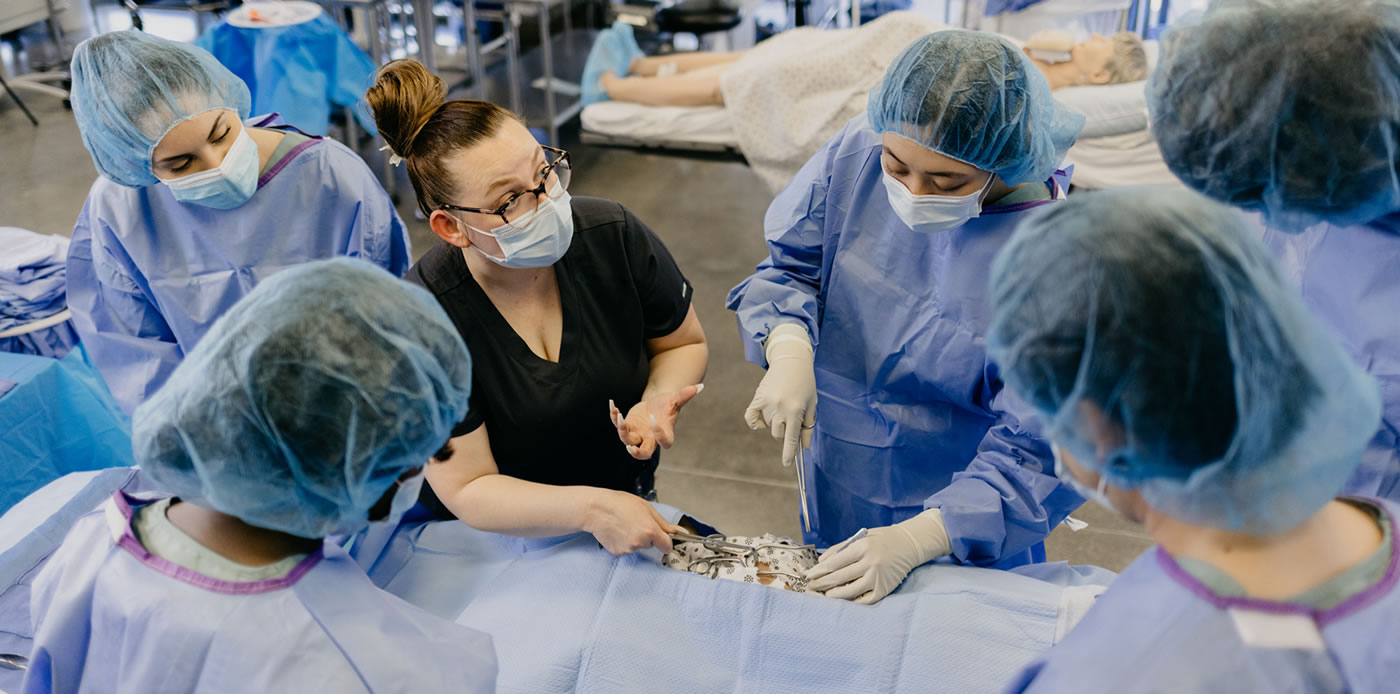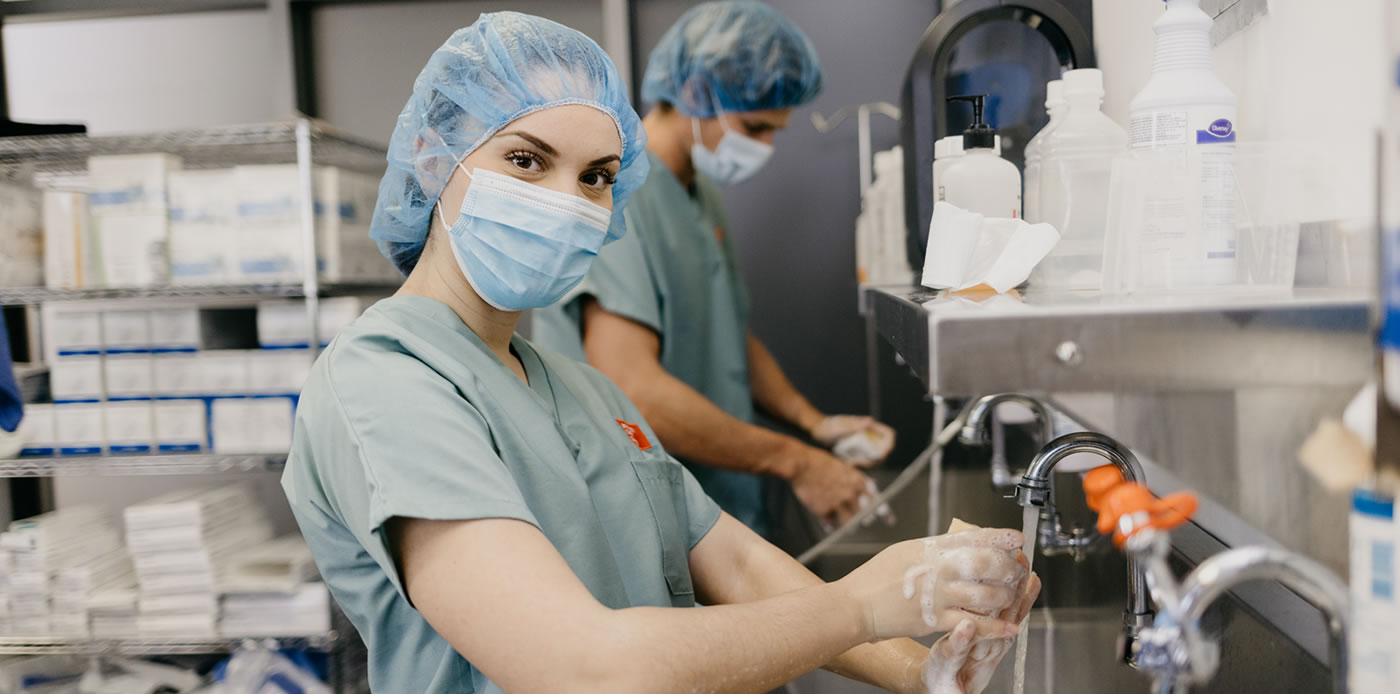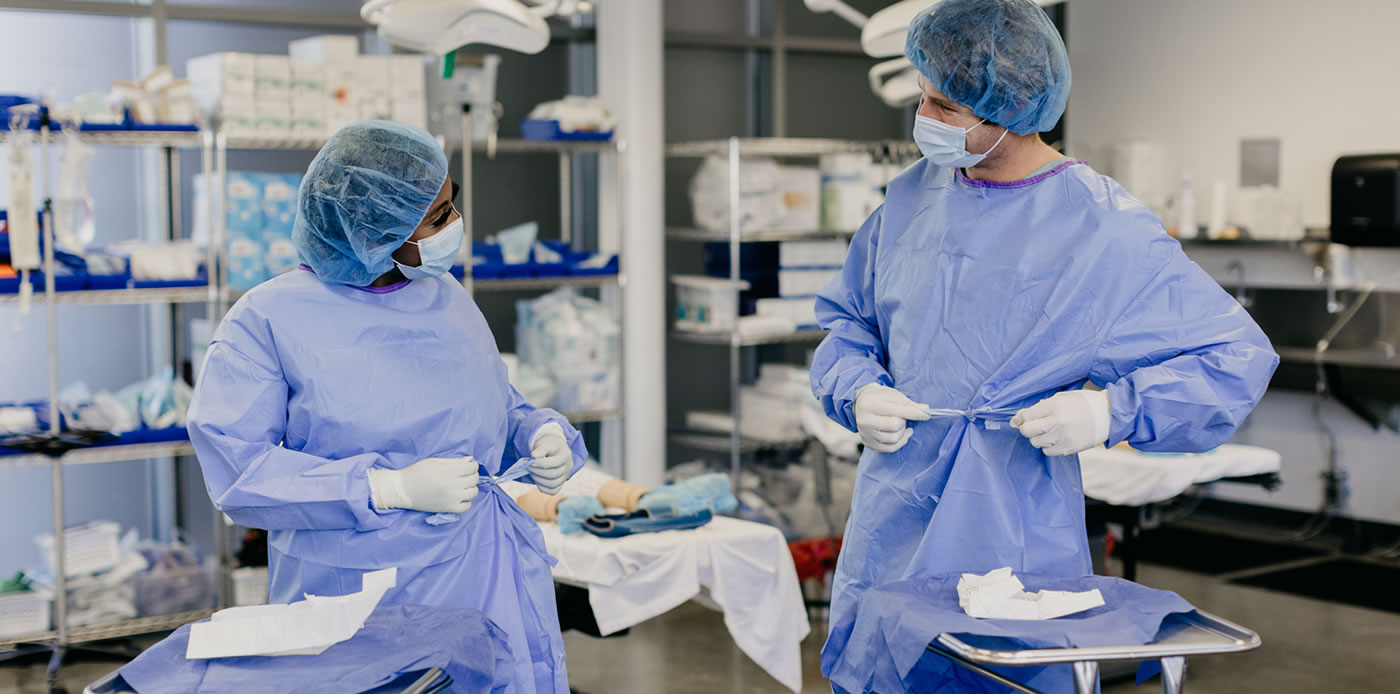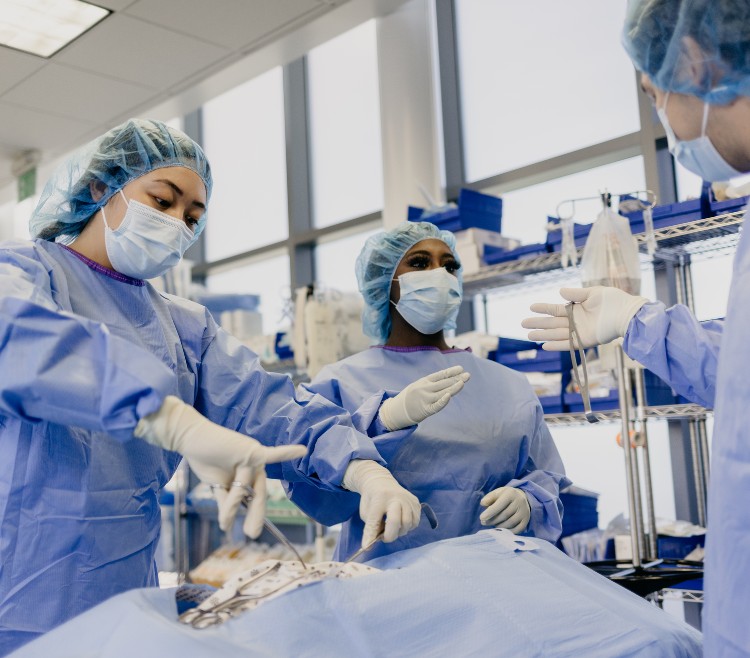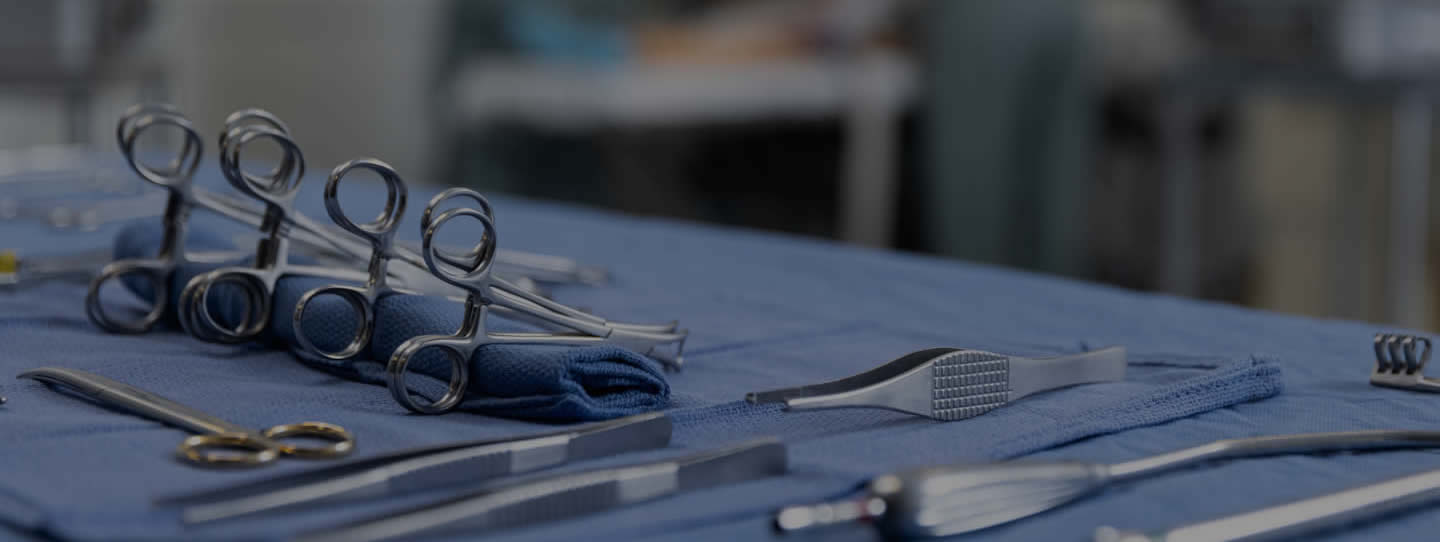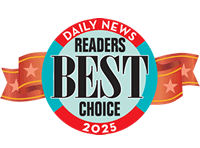| CAREER200 |
Career Advantage † |
20 | 0 | 2.0 |
Career Advantage is a course designed to prepare students to develop career planning and job search skills. Thorough, relevant job search preparation is required to compete successfully for jobs in today's market. To prepare the student, the course will address six areas: resumes, job search process, networking techniques in a job search, interview planning and preparation, communication and workplace skills. |
| MEDTR110 |
Medical Terminology |
40 | 0 | 4.0 |
The course introduces the student to the use of medical terminology in the health care field. The student studies how component parts are used to form medical terms, how suffixes and prefixes are used to build medical, diagnostic testing, and procedural terminologies. Additionally, the student studies abbreviations with associated appropriate medical terms. Lastly, students will review the medical terminology associated with the organization of the body, body cavities and organs, divisions of the back and the planes of the body and body system disorders.
|
| SURG100 |
Introduction to Surgical Technology |
40 | 0 | 4.0 |
This course introduces the student to the surgical technology field. History of surgery, surgery today, and history of surgical technology are discussed. The student will also learn about surgical technology as a profession, the structure of health care facilities and hospital organization. In addition, the student will be introduced to the scope of practice as a member of the surgical team and introduced to medical terminology. Furthermore, students will learn about the microbiological considerations of the operating room, the disinfection and sterilization techniques used to process surgical instruments, equipment and supplies. The principles of asepsis are discussed in detail as well. |
| SURG111 |
Surgical Techniques I |
40 | 0 | 4.0 |
This course introduces the student to the operating room environment. Common hazards and safety precautions are discussed. The student will also learn about technological advances of the modern operating room. In addition, the student will be introduced to basic surgical instrumentation, equipment and supplies. The student will also learn about wound healing, sutures, wound closure techniques, and needle types and parts. |
| SURG111-L |
Surgical Techniques I Lab |
80 | 0 | 4.0 |
In the laboratory component of this course the student is introduced to basic surgical techniques such as aseptic technique, scrubbing gowning and gloving, establishing a sterile field and organizing the sterile field. The student will also learn how to perform the surgical counts as well as assisting with draping the surgical patient. |
| ANAT240 |
Advanced Anatomy and Physiology |
60 | 0 | 6.0 |
The purpose of this course is to understand the organization and general plan of the body and the importance of how the human body functions. By course completion, students should be able to provide an overview of the associate major terms and physiologic functions used in anatomy with clinical situations, define and describe anatomical structures and normal physiologic functions of the musculoskeletal system, integumentary system, respiratory system, gastrointestinal system, cardiovascular system, urinary system, reproductive system, digestive system, endocrine system, and the central nervous system. |
| SURG131-L |
Surgical Techniques II Lab |
80 | 0 | 4.0 |
In the laboratory component of this course the student demonstrates an intermediate understanding of surgical techniques such as aseptic knowledge, scrubbing gowning and gloving, establishing and organizing the sterile field, surgical counts and draping. |
| SURG210 |
Pathophysiology I |
40 | 0 | 4.0 |
This course exposes the student to surgically treatable diseases in the following surgical subspecialties: Diagnostic, General, OB/GYN, Ophthalmology, ENT and GU. The student will learn about disease processes and their corresponding surgical treatments. Equipment, supplies, instrumentation and technical considerations for each subspecialty will also be discussed. In addition, the student will be taught the procedural steps to some of the most commonly performed surgeries in these specialty areas. |
| SURG260 |
Surgical Procedures I |
80 | 0 | 4.0 |
This course introduces the student to advanced techniques in surgical patient care. The techniques are reinforced through hands-on practicum. The student will learn the different roles of the surgical technologist (Scrub Role-STSR, Assistant Circulator - STAC and Second Assistant – STSA roles) during routine mock surgical procedures in the laboratory setting. The student will participate in mock scenarios for the following surgical subspecialty areas: Minor, General, Obstetric and Gynecological Procedures. |
| SURG230 |
Pathophysiology II |
40 | 0 | 4.0 |
This course exposes the student to surgically treatable diseases in the following surgical subspecialties: Plastic/Reconstructive, Orthopedic, Cardiothoracic, Cardio/Peripheral Vascular, Oral/Maxillofacial and Neurological Surgery. The student will learn about disease processes and their corresponding surgical treatments. Equipment, supplies, instrumentation and technical considerations for each subspecialty will also be discussed. In addition, the student will be taught the procedural steps to some of the most commonly performed surgeries in these specialty areas. |
| SURG270 |
Surgical Procedures II |
80 | 0 | 4.0 |
This course introduces the student to advanced techniques in surgical patient care. The techniques are reinforced through hands-on practicum. The student will learn the different roles of the surgical technologist (Scrub Role - STSR, Assistant Circulator - STAC and Second Assistant – STSA roles) during routine mock surgical procedures in the laboratory setting. The student will participate in mock scenarios for the following surgical subspecialty areas: ENT, Genitourinary, Neuro, Orthopedic and Endoscopic Procedures. |
| SURG140 |
General Microbiology |
40 | 0 | 4.0 |
This course focuses on a study of several types of microorganisms, with emphasis on bacteria, protists and viruses. The principles of microbiology will be examined using topical investigations of their metabolism, genetics, immunology, and uses, considering both with medical and non-medical illustrations and their applications. Finally, students will develop a better understanding of the nature of the interaction, both harmful and beneficial, between various microbial species and the human environment. |
| SURG200 |
Pharmacology |
40 | 0 | 4.0 |
This course teaches the student the basic principles of pharmacology. The student will also learn the classification, names, uses and important technical considerations for the most commonly dispensed drugs before and during surgery. Anesthetic agents and techniques in anesthesia will also be discussed. |
| SURG251 |
Clinical Orientation |
40 | 0 | 4.0 |
This course introduces the student to basic principles of peri-operative patient care. The scope of practice is discussed with the characteristics and needs of the surgical patient. The student will also learn about the principles of surgical case management from the perspective of the surgical technologist in the scrub role. This course will prepare the student for their clinical rotation and the Certified Surgical Technologists (CST) exam given by the National Board of Surgical Technology and Surgical Assisting (NBSTSA). |
| SURG251-L |
Clinical Orientation Lab |
80 | 0 | 4.0 |
In this course the student should be able to satisfactorily perform the aspects of the Surgical Technologist in the Scrub Role (STSR) in preparation for clinical rotation. |
| SURG296-A |
National Certification Review I |
40 | 0 | 4.0 |
This course assists the student in preparing for the Certified Surgical Technologist (CST) exam via a series of review exercises and practice exams. Material covered in the Surgical Technology program is reviewed along with sample questions comparable to those asked on the certification exam. |
| SURG282 |
Clinical Practicum I |
270 | 270 | 9.0 |
This course provides the student with actual experience participating in surgical procedures and direct patient care in the Surgical Technologists role in the following areas: preoperative, intra-operative, and postoperative patient care. The student also participates in assisting with instrument processing as well as pulling supplies and instrumentation from the sterile supply areas. A clinical experience includes assisting team members with daily peri-operative duties of a surgical technology student while under the supervision of a staff surgical technologists and/or registered nurse. Students are oriented to a surgical facility and the daily routine of the facility. They may initially observe surgical procedures and then begin to second scrub minor procedures. As their clinical experience progresses they move into the first scrub position for minor procedures and then scrub major cases. Students must demonstrate completion of one hundred and twenty (120) procedures in the first scrub and second scrub role. Within the 120 cases, students are required to complete 30 cases in General Surgery. Twenty of the cases must be in the First Scrub Role. Students are required to complete 90 cases in various surgical specialties. Sixty of cases must be in the First Scrub Role and evenly distributed between a minimum of 5 specialties. However, 15 is the maximum number of cases that can be counted in any one surgical specialty. The 120 cases must be completed between the two clinical practicum courses, SURG 282 and SURG 292. |
| SURG296-B |
National Certification Review II |
40 | 0 | 4.0 |
This course assists the student in preparing for the Certified Surgical Technologist (CST) exam via a series of review exercises and practice exams. Material covered in the Surgical Technology program is reviewed along with sample questions comparable to those asked on the certification exam. |
| SURG292 |
Clinical Practicum II |
270 | 270 | 9.0 |
This course provides the student with actual experience participating in surgical procedures and direct patient care in the Surgical Technologist role in the following areas: preoperative, intra-operative, and postoperative patient care. The student also participates in assisting with instrument processing as well as pulling supplies and instrumentation from the sterile supply areas. A clinical experience includes assisting team members with daily peri-operative duties of a surgical technology student while under the supervision of a staff surgical technologists and/or registered nurse. Students are oriented to a surgical facility and the daily routine of the facility. They may initially observe surgical procedures and then begin to second scrub minor procedures. As their clinical experience progresses they move into the first scrub position for minor procedures and then scrub major cases. Students must demonstrate completion of one hundred and twenty (120) procedures in the first scrub and second scrub role. Within the 120 cases, students are required to complete 30 cases in General Surgery. Twenty of the cases must be in the First Scrub Role. Students are required to complete 90 cases in various surgical specialties. Sixty of cases must be in the First Scrub Role and evenly distributed between a minimum of 5 specialties. However, 15 is the maximum number of cases that can be counted in any one surgical specialty. The 120 cases must be completed between the two clinical practicum courses, SURG 282 and SURG 292. |
